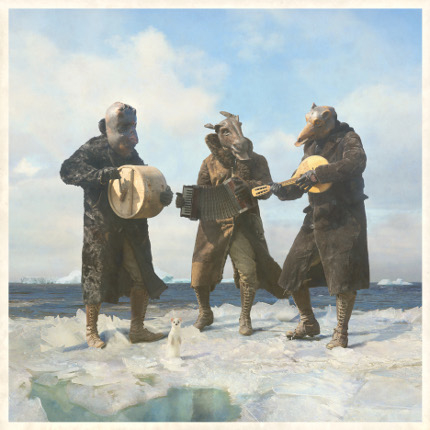Kahn & Selesnick have been balancing on the brink of probability for at least twenty years. They evoke historical figures and link them to half-truths and artifacts of their own device. By doing so they seem to be rewriting history into a tale of spectacular fiction. Eisbergfreistadt, 1923 is the tale of an iceberg that drifted off to the port of Lübeck, Germany. Here it was transformed into a temporary free trading zone, a floating haven complete with it's own currency, fashion and architecture. Chronologically in sync with the poor financial tidings in Germany after the first world war, and with the utopian motivations of Bauhaus. Eisbergfreistad is very conceivable in it's constructed context.
Kahn & Selesnick present these narratives in a way that mimics our visual presentation of history. By showing snippets of newspapers, tools, clothes and other everyday items next to their grand panoramic spectacles, they facilitate a suspension of disbelief. They question the trust we place in our collective memory by focusing on the subjectivity of documenting it. Inventing and creating history seems to become increasingly probable as the trust in the objectivity of the image and its authenticity in general fades. It also raises the question if there is any danger in expanding on, or indeed fabricating history, as long as it's not in conflict with what is considered to be it's true course. They do not wish to fool the spectator into believing their fiction. But they do want to make the viewer aware of the liberty that can be taken with any given historical context.
It is often said that history is written by the victorious. Eisbergfreistad is the story of a financial paradise that was doomed from the start. Their currency, Eisbergfreigeld is the same as the notgeld that was issued in Germany as the result of hyperinflation. It was never legal and worth less than the paper it was printed on. This slowly melting lump of ice that came to an premature end as the result of the weight of a masked ball that split the isle in two. With this story Kahn & Selesnick comment on the sustainability of an economy in a thoroughly unsuitable social and natural climate. In the same way we can use history as a guideline for our future, Kahn & Selesnick recreate modern issues as a historic metaphor.
